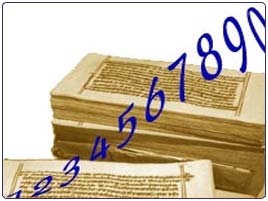Education Entrepreneur Takes Interest in Vedic Math
By Philip Batson | Oct 30, 2007

Even with a math degree, Chris Kuttenkuler had never seen anything like Vedic math before.
Now he cannot stop thinking about it.
“It’s completely different,” Kuttenkuler said. “When I saw this my first question was, ‘Why wasn’t I taught this?’”
Vedic (Vay-dik) math refers to an ancient Indian system of mathematics rooted in 16 principles. Calculations can be completed mentally and solved without traditional math methods.
Vedic math inspired Math Monkey, a Florida-based company launched in 2005. The goal is to teach children math in a fun and new way.
While attending a franchise expo 18 months ago, Kuttenkuler became drawn in by the math and the experience. At the ribbon-cutting ceremony for his own Math Monkey franchise on Oct. 12, Kuttenkuler performed a demonstration of some of the Vedic math techniques.
Working left to right on a dry erase board spanning the wall, Kuttenkuler solved a variety of multiplication problems in his head, using just one line for the answer.
“To me that’s the biggest change,” Kuttenkuler said. “Once you start to get used to that the mental stuff becomes much easier.”
Connor Cahill, 8 and a second-grader at Oak Hill Elementary School, plans to become a monkey.
“It’s confusing now, but probably when I go to it, it won’t be so confusing anymore,” Cahill said.
Cahill attended a demonstration class and liked what he saw.
“I like math and I just want to get better at it and improve on it,” Cahill said.
Connor’s mom, Paige Cahill, enjoyed seeing a different approach to math.
“Even though he’s in elementary school, what a foundation this could be when he takes the ACT,” Paige Cahill said. “It’s kind of the passport for making it easier for his whole life.”
Kuttenkuler stressed that the math and techniques taught are not intended to replace what children learn in school. He said they provide children another way to understand and enjoy math.
“We’re trying to add to what the kids have already learned,” Kuttenkuler said. “We’re just trying to get them another way of solving problems.”














